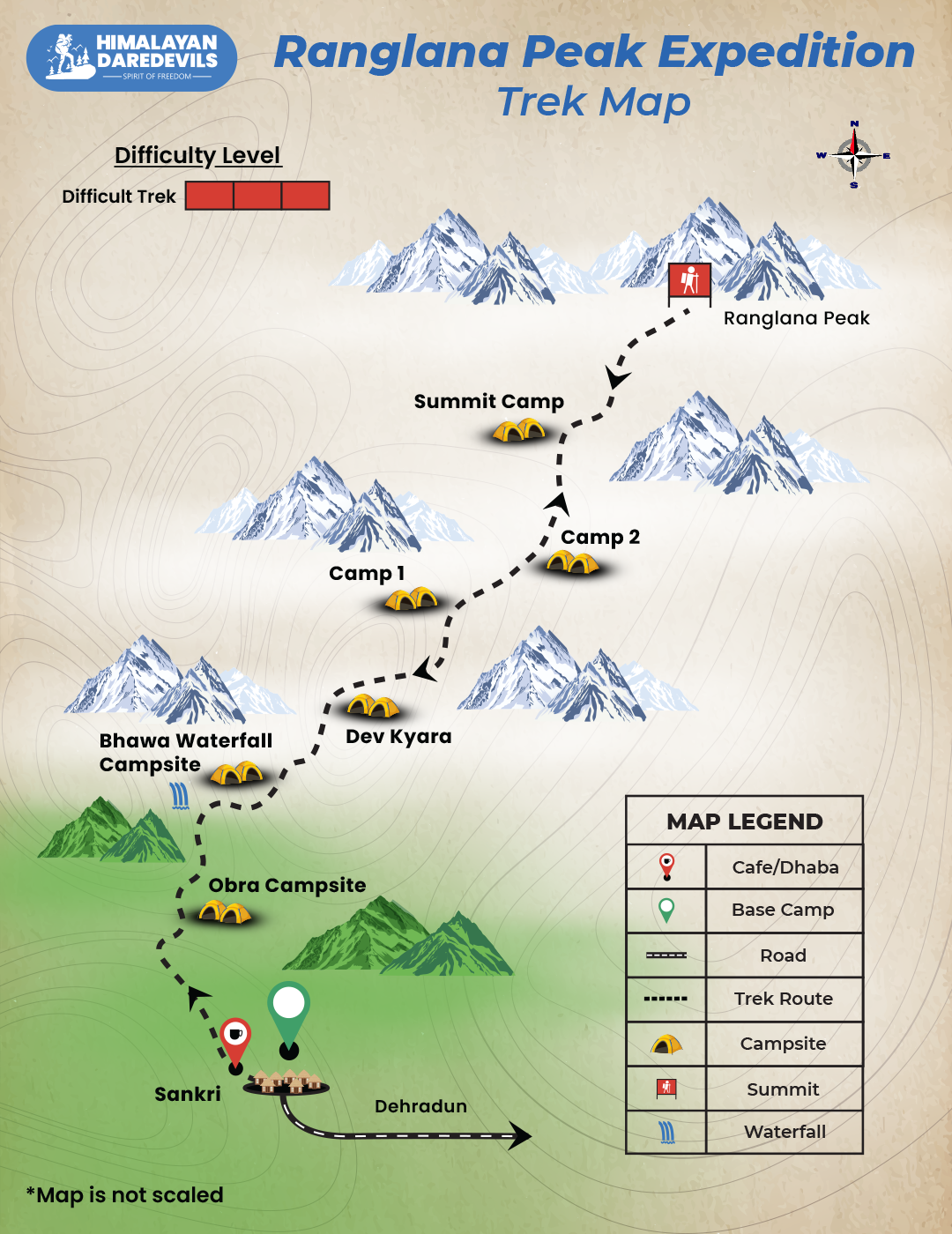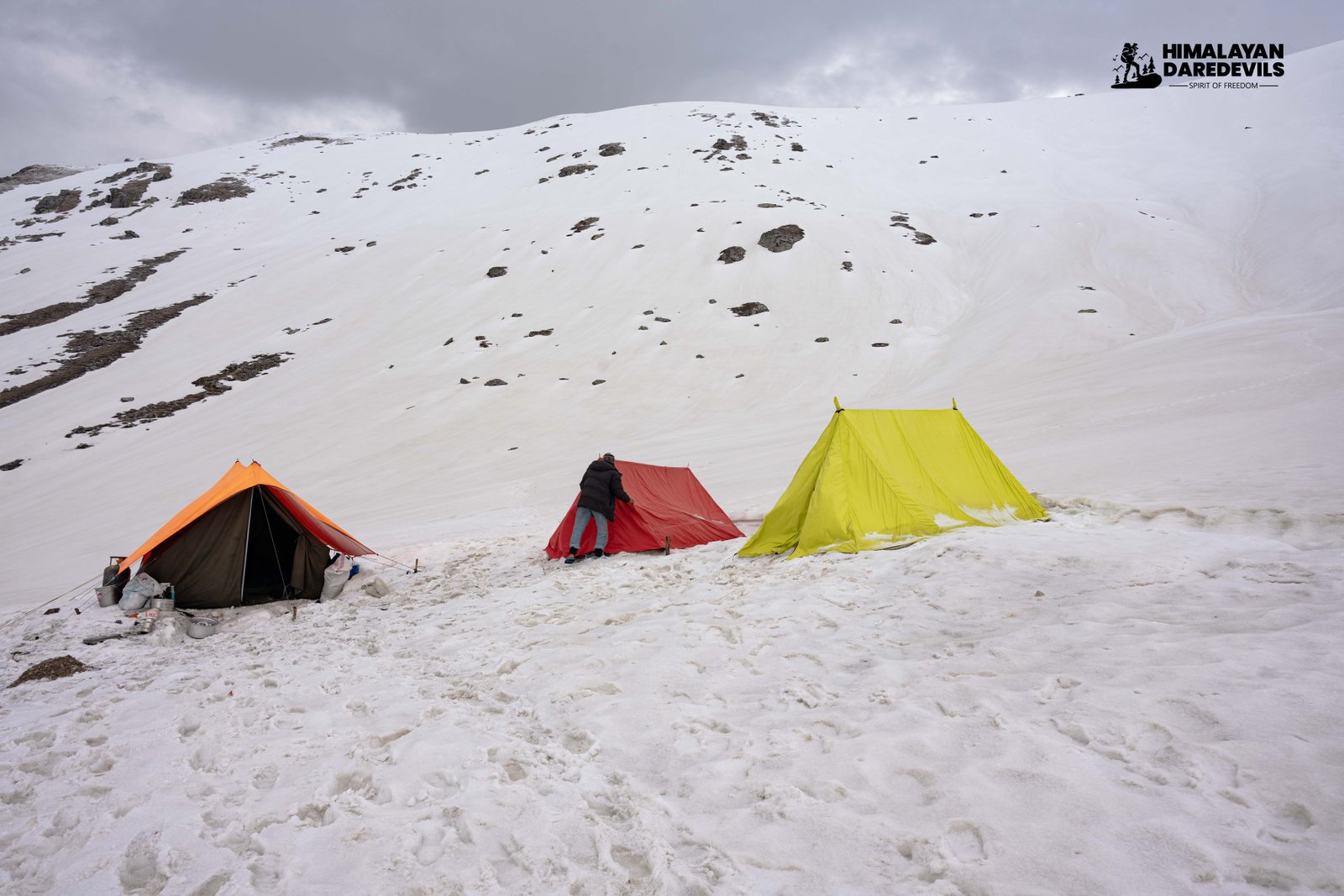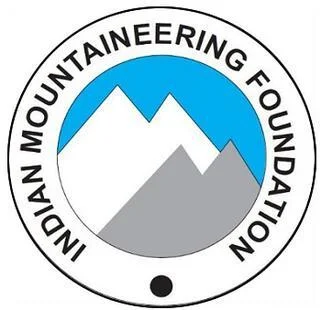Starting From
126,500
110,000.00

Starting From
126,500
110,000.00
Starting From
126,500
110,000.00
Ranglana Peak Expedition (390+ Reviews)
The trek starts and ends in Sankri
Dehradoon Railway Station
Jolly Grant Airport
Sankri
May, June, September, October
Sankri to Sankri
Veg
Hotel / Camping
Uttarakhand
17 Days
Difficult
18221 Ft
75 Km
Overview
The Ranglana Peak Expedition takes you on an awe-inspiring journey through the Garhwal Himalayas, culminating at a majestic altitude of 5554 meters. Serving as a sentinel to its surroundings, the peak stands tall, offering a sight to behold from various treks in the Garhwal region.
Itinerary
We start early from Dehradun and head to Mussoorie, passing by the Lakhamandal temple, linked to the Mahabharata legend. Along the way, we encounter villages like Damta, Purola, Mori, and Netwar. The Yamuna river accompanies us till Purola, the last major settlement with a market. It’s advisable to grab any essentials here. Mobile networks work up until Purola.
We kickstart the day early, making our way to the Obra Thatch campsite. It’s a fairly easy trek with lovely river views and nice spots to take a breather. We arrive at the campsite in the afternoon, leaving us plenty of time to set up and relax. If it’s a sunny day, you might want to dip into the river for a refreshing splash.
On the second day of trekking, get ready for the longest journey with a significant climb in altitude. We’ll start by ascending through a dense pine forest. As we go, the scenery transforms into a breathtaking open valley with stunning views of towering snow-capped peaks. Our destination for the day is Bhawa Waterfall, a majestic sight cutting across a mountainside where we’ll set up camp.
This day is the trek’s highlight. After an hour from Bhoj Gadi, we descend to the iconic Phulara Ridge. A ridge is a chain of mountains that form a continuous crest, with narrow edges dropping into valleys on either side. This gives you a clear view of the stunning Garhwal Himalayan ranges, including Swargarohini and Bandarpoonch, in three directions. It’s truly awe-inspiring.
We’ll trek from Devkiyara (4100 m) to Camp 1 (4687 m). This leg of the journey involves ascending to a higher altitude. The terrain may include rocky sections and possibly some snow patches, depending on the season.
Start the day with a gentle acclimatization activity around Camp 1. This could include short hikes, breathing exercises, or light stretching to help your body adjust to the higher altitudeSpend some time resting at Camp 1. Take this opportunity to hydrate well and nourish your body with balanced meals..Take a leisurely stroll around Camp 1 to enjoy the stunning views and immerse yourself in the natural beauty of the surroundings. It’s also an excellent opportunity for photography.
Start the trek, ascending through the mountainous terrain. The path may include rocky sections and possibly some snow patches. Take in the breathtaking views of the surrounding peaks and landscapes.Stay well-hydrated throughout the trek. Take regular breaks for water and snacks to maintain your energy levels.
May involve navigating through challenging terrain, including steep slopes and rocky patches.The term “Load Ferry” suggests that this stage may involve carrying equipment, supplies, or loads to establish a higher camp in preparation for the final summit push.
Have a hearty and nutritious breakfast to fuel your body for the strenuous ascent. Embark on the demanding climb towards the Summit Camp. This section of the trek will likely be the most challenging, involving steep slopes, potentially icy or rocky terrain, and high altitudes.
Pay close attention to your pacing. Move at a steady and sustainable pace, taking regular breaks to catch your breath and acclimatize to the thinning air. Reach the Summit Camp, which may be located at a higher altitude, where you’ll set up tents and establish a base for the summit attempt. Take some time to rest, rehydrate, and acclimatize.
Begin the day with a gentle acclimatization activity around the Summit Camp. This could include short hikes, breathing exercises, or light stretching to help your body adjust to the extreme altitude.Spend some time resting at the Summit Camp. Focus on staying well-hydrated and consume balanced meals to nourish your body for the challenging ascent Engage in a briefing or educational session conducted by your expedition leaders. This may cover important topics like altitude sickness prevention, emergency procedures, and safety protocols specific to the summit day. Go over the summit route with your expedition leaders, discussing any potential challenges, key landmarks, and important safety measures.
Begin well before dawn, typically in the early hours of the morning, to take advantage of stable weather conditions and ensure ample time for the ascent.Have a light, easily digestible breakfast to provide initial energy for the climb.Ensure your headlamp is functioning properly, and carry spare batteries. Check harnesses, ropes, and other safety equipment.
The day reserved for the summit attempt is a critical stage of the expedition.
The day reserved for the summit attempt is a critical stage of the expedition.
Start the day early, beginning your descent from the Summit Camp. Descending can be physically demanding, so proceed with caution and use proper techniques. Maintain open communication with your team members and leaders during the descent.Take in the scenic views as you descend. The landscape may look different from this perspective, offering new perspectives of the terrain.
Start the descent from Camp 1. You’ll be navigating through the terrain you ascended earlier in the expedition, but this time heading downhill.Take in the changing landscape as you descend. You’ll notice different perspectives and views compared to your ascent.Reach Obra, marking the end of your trek. Settle into your accommodations or designated area for rest.
Early in the morning, we leave the campsite . The walk is downhill and hence takes lesser time than before. We walk alongside the River until we finally arrive at the place where we started the trekking Journey, from where a vehicle takes us back to Sankri. We retire for the day in camp alongside the river or in a guest house in Sankri.
Expedition of Ranglana Peak concludes today as we leave Sankri and reach Dehradun by late afternoon.
Ranglana Peak Expedition Map

Inclusions
Exclusions
All accommodations on twin sharing tents as per the itinerary.
All meals during the trek (vegetarian with occasional serving of eggs) including breakfast, hot/packed lunch, and dinner with morning and evening tea
Certified Trek Leader, Cook and Support Staff
Medical Kit
Forest Permits
Camping Equipment including tents, kitchen & dining tents, toilet tents etc Gaiters, Microspikes, when needed
Personal expenses like tips, personal medicines, phone calls etc.
Any transport support during the trek apart from what is included above
Any cost or services not mentioned in the Inclusions
Accommodation in Dehradun
Adventure Insurance
Cost arising due to unforeseen incidents like bad weather, medical evacuation, roadblocks etc
Porter and mule support to carry personal Luggage can be arranged at an additional cost (weighing up to 12 kg)
Please carry a lunch box for packed lunch/breakfast to avoid using polythenes and Aluminium foils. Keeping the Himalayas clean is our own responsibility. Reduce the use of Plastic when you are in the abode of the Sacred Himalaya.
All accommodations on twin sharing tents as per the itinerary.
All meals during the trek (vegetarian with occasional serving of eggs) including breakfast, hot/packed lunch, and dinner with morning and evening tea
Certified Trek Leader, Cook and Support Staff
Medical Kit
Forest Permits
Camping Equipment including tents, kitchen & dining tents, toilet tents etc Gaiters, Microspikes, when needed
Personal expenses like tips, personal medicines, phone calls etc.
Any transport support during the trek apart from what is included above
Any cost or services not mentioned in the Inclusions
Accommodation in Dehradun
Adventure Insurance
Cost arising due to unforeseen incidents like bad weather, medical evacuation, roadblocks etc
Porter and mule support to carry personal Luggage can be arranged at an additional cost (weighing up to 12 kg)
Please carry a lunch box for packed lunch/breakfast to avoid using polythenes and Aluminium foils. Keeping the Himalayas clean is our own responsibility. Reduce the use of Plastic when you are in the abode of the Sacred Himalaya.
What to carry
- Trekking shoes: A good pair of trekking shoes is essential for a comfortable and safe trek. Look for shoes that are sturdy, provide good ankle support, and have a good grip on different types of terrain.
- Backpack with rain cover (50-60 ltr): A backpack is necessary to carry all your gear. Make sure it's the right size for your trek, and comes with a rain cover to keep your belongings dry in case of rain.
- Thermals (upper and lower): Thermals are lightweight and comfortable base layers that help regulate your body temperature in cold weather. Bring both upper and lower thermals to keep warm.
- 3 T-shirts (advisable quick dry): Choose quick-drying T-shirts made from breathable and moisture-wicking materials. This will help keep you cool and dry during your trek.
- 2 trek pants: Choose lightweight and comfortable trek pants that are easy to move in and can dry quickly if wet.
- Jacket (-10 degrees): A warm jacket is essential for cold weather. Choose a jacket that is waterproof and windproof, and provides good insulation.
- Fleece or hood (2): Fleece jackets or hoodies are great mid-layer options to keep warm. Bring at least two, as they can also be used as an extra layer at night.
- Sunglasses (UV protected): Protect your eyes from the sun's harmful UV rays with sunglasses that are designed for outdoor activities.
- Sun cap: A sun cap or hat with a brim will protect your face and neck from the sun.
- Hand gloves: Bring a pair of lightweight gloves to keep your hands warm and protected from wind and sunburn.
- Woolen cap: A woolen cap will keep your head and ears warm at night or in cold weather.
- Socks (3 pairs min): Bring at least three pairs of good quality socks that are moisture-wicking and provide good cushioning and support for your feet.
- Headlamp: A headlamp will come in handy if you're hiking in low-light conditions or need to find your way in the dark.
- Trekking pole (if needed): Trekking poles can help reduce strain on your legs and provide additional support on steep terrain.
- Rain cover\poncho: A rain cover or poncho will keep you and your gear dry during unexpected rain showers.
- Day pack (if you plan to offload your bag): If you plan to offload your backpack during the trek, bring a smaller day pack to carry essentials like water, snacks, and a first aid kit.
- A toiletry kit: Bring a small kit with personal hygiene items, such as a toothbrush and toothpaste, wet wipes, hand sanitizer, and toilet paper.
- Lunchbox, cup, spoon: If you plan to bring your own food, bring a lunchbox, cup, and spoon to carry and eat your meals.
- 2 one-liter bottles: Staying hydrated is crucial, so bring at least two one-liter bottles to carry water.
- 2-3 plastic covers to keep your wet or used clothes: Plastic bags are useful for keeping wet or dirty clothes separate from the rest of your belongings. They can also be used to pack out any trash or waste you generate during the trek.
How to reach
With a variety of means of transport available, this beautiful city. Find lots of beauty in every mode of traveling by road, air, or train as each route takes you through different sights. Get ready to be impressed by the mountains as you begin this marvelous trip.
By Road
From Delhi :
Distance: About 260 km.
Time: 6 to 7 hours.
Route: NH 44 should be taken; this road goes through Meerut, Muzaffarnagar, and Roorkee which is scenic.
Suggestion: You may take a cab or book a cab online rather than getting stressed out about availability.
Local Buses:
Frequency: Buses are available in the regions of Delhi, Chandigarh, and Haridwar after every hour.
Forms: AC and non-AC buses are both provided.
Booking: These can be bought online or at the bus stop
Self Drive:
Benefits: You can also check out places on your way around.
By Air
Jolly Grant Airport:
Distance from the airport to Dehradhun: It is 25 kilometers.
Air Transport Available: Major Indian metropolitan cities namely Delhi, Mumbai and Banglore have rounds of flights to this airport regularly.
Time: 1 hour starting from Delhi.
Transportation after the flight:
Alternatives: Taxis and private cabs are available outside the airport.
Time taken to travel from the airport to Dehradun: 40 to 60 minutes.
By Train
Dehradun Railway Station:
Connectivity: Trains connect it well to prime locations such as Delhi, Mumbai, and Calcutta.
Popular Trains:
Nanda Devi Express: Travel time is Nanda Devi overnight service.
Shatabdi Express: Day service; fast and comfortable.
Dehradun Express: Return options are available regularly.
Fitness and preparation guide for Ranglana Peak Expedition
We recommend jogging as the best routine to get fit for a trek. It works on the same muscles that you use while trekking — your calves, glutes and hamstrings. It helps increase your stamina day by day. It is also an easy routine that does not require any equipment or tools.
Fitness target:
To do this trek comfortably, you must be able to cover 5 km in under 35 minutes. This is the minimum fitness required for this trek.
How to achieve this fitness?
- Start jogging at least 4 days a week
- If you cannot run 5 km immediately, start with 2 km and increase to 5 km over 2-3 weeks.
- Once you’re able to run 5 km, increase your pace day by day.
- Gradually increase your pace and bring it down to 5 km in less than 35 mins.
- You must be able to run 5 km in 35 mins consistently for at least 2 weeks before the trek.
This trek requires at least 6-8 weeks of preparation. The longer, the better. So plan your trek soon and start preparing.
Cancellation policy
Life is unpredictable and we understand sometimes you have to cancel or change your trip dates and it is our endeavour to make it as easy possible for you. However, please understand we plan everything including guide fees, permits, accommodation and ration in advance. Therefore any cancellation means inconvenience and certain losses to the people involved in various stages of programme. Keeping that in mind, our cancellation charges are as below-
Cancellation prior to 30 days from start of the event: Get monetary refund with 15% of cancellation charges on trek fee.
Cancellation between 30 days and 15 days to the start of event: 50% on trek fee is non refundable and the remaining 50 % will be given as cash voucher which is valid for 1 year.
Cancellation less than 15 days to the start of event: No refund.
Please note cancellation will be only accepted by email.
Booking amount is non refundable
Note: The Himalayan Daredevils reserves the right to cancel a programme before departure in the event of logistical problems arriving due to natural calamities, strikes, wars on any other circumstances that makes the event inadvisable. In this case, 50% on trek fee is non refundable and the remaining 50 % will be given as cash voucher which is valid for 1 year.
Itinerary changes & trip delays:
We plan itineraries based on the information at the time of planning and in rare circumstances, there are subject to change. In the event that the itinerary is changes or delayed due to unforeseen circumstances such as bad weather conditions, transportation delays, government intervention, landslides etc. We will always aim to give you the best experience possible. However The Himalayan Daredevils are not be held responsible for the cost of delay or changes.
Why Choose Us







